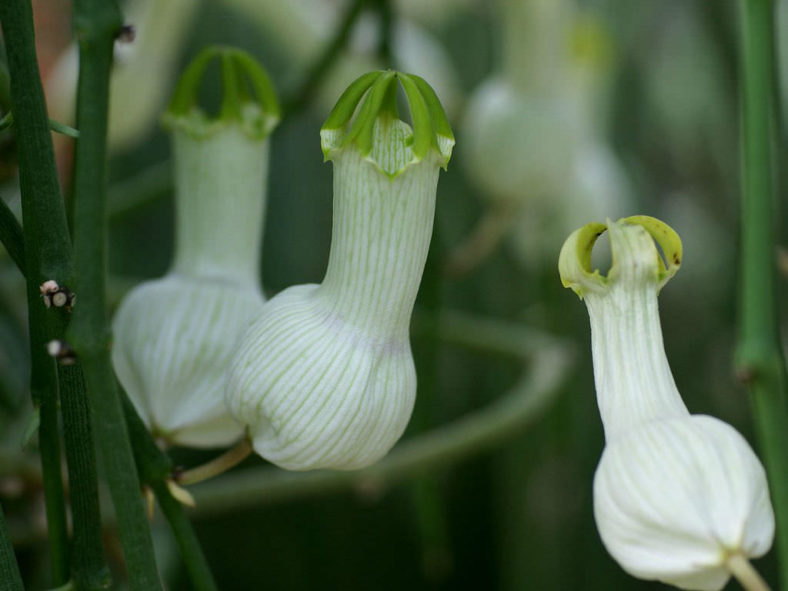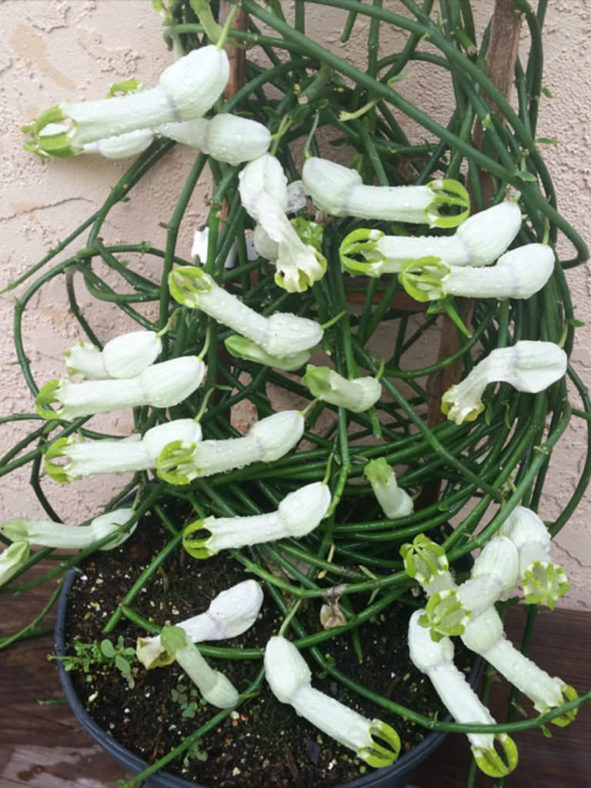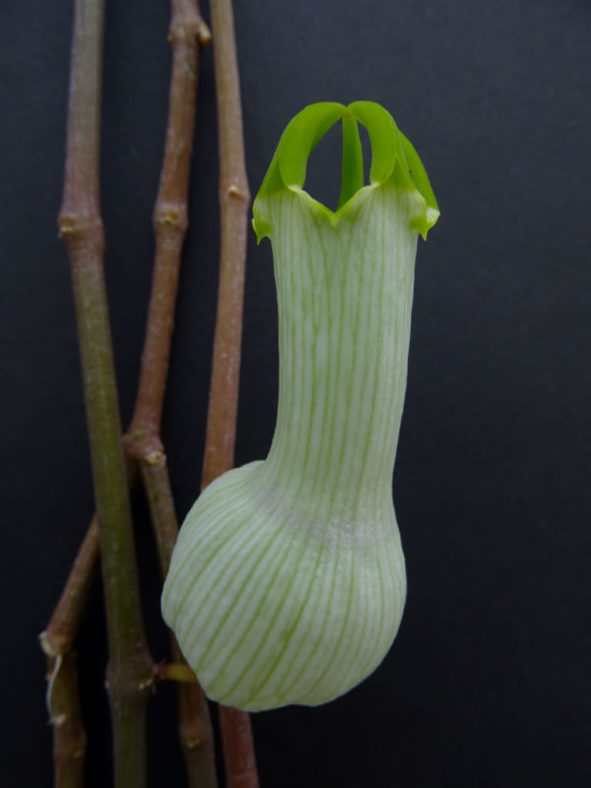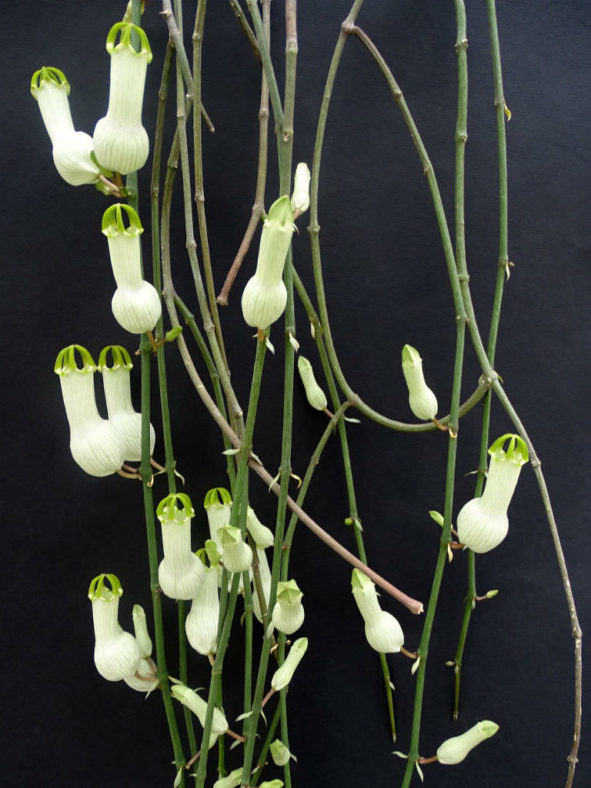Scientific Name
Ceropegia ampliata E.Mey.
Common Name(s)
Bushman's Pipe, Condom Plant, Horny Wonder, Taper Vine
Scientific Classification
Family: Apocynaceae
Subfamily: Asclepiadoideae
Tribe: Ceropegieae
Genus: Ceropegia
Origin
Ceropegia ampliata is native to South Africa. It is commonly found on dry, stony hillsides, twining in other vegetation.
Description
Ceropegia ampliata is a succulent climber with strange-looking flowers that appear in late summer. The stems are hairless, twining or scrambling, and arise from a fleshy, tuberous rootstock. They occasionally branch at the nodes and grow more than 6.6 feet (2 m) long. The tiny leaves are lance-shaped or heart-shaped.
The flowers are produced at each node, 2 to 4 together, and open one after another. They are tube-shaped, pale green to white or white with green longitudinal stripes, and can reach up to 2.8 inches (7 cm) in length.

Hardiness
USDA hardiness zones 10b to 11b: from 35°F (1.7°C) to 50°F (10°C).
How to Grow and Care
A gritty compost is suitable, and clay pots help with drainage, especially for the species with white, thickened roots most susceptible to rotting and species forming large tubers. Ceropegias appreciate water and a little fertilizer during warm weather, although some care with watering is required for the more difficult species. The vine-like species can suffer from prolonged drought.
Typically, many of these species grow and climb naturally among bushes, which provide shade and humidity to the base, while the vegetative growth is in the light. Where tubers occur, they are best planted on the surface of the compost, and the vegetative growth is allowed to twine around supports or trail down from a hanging pot. The latter growth mode has the advantage of not using valuable bench space. Small tubers formed at joints in the thin stems of some species can be used for propagation. If the tuber rots or dries out, don't panic. If some of the top growth is still in reasonable condition, it may be possible to save the plant by re-rooting stems in damp gravel.
Learn more at How to Grow and Care for Ceropegia.
Links
- Back to genus Ceropegia
- Succupedia: Browse succulents by Scientific Name, Common Name, Genus, Family, USDA Hardiness Zone, Origin, or cacti by Genus
Photo Gallery
Click on a photo to see a larger version.


